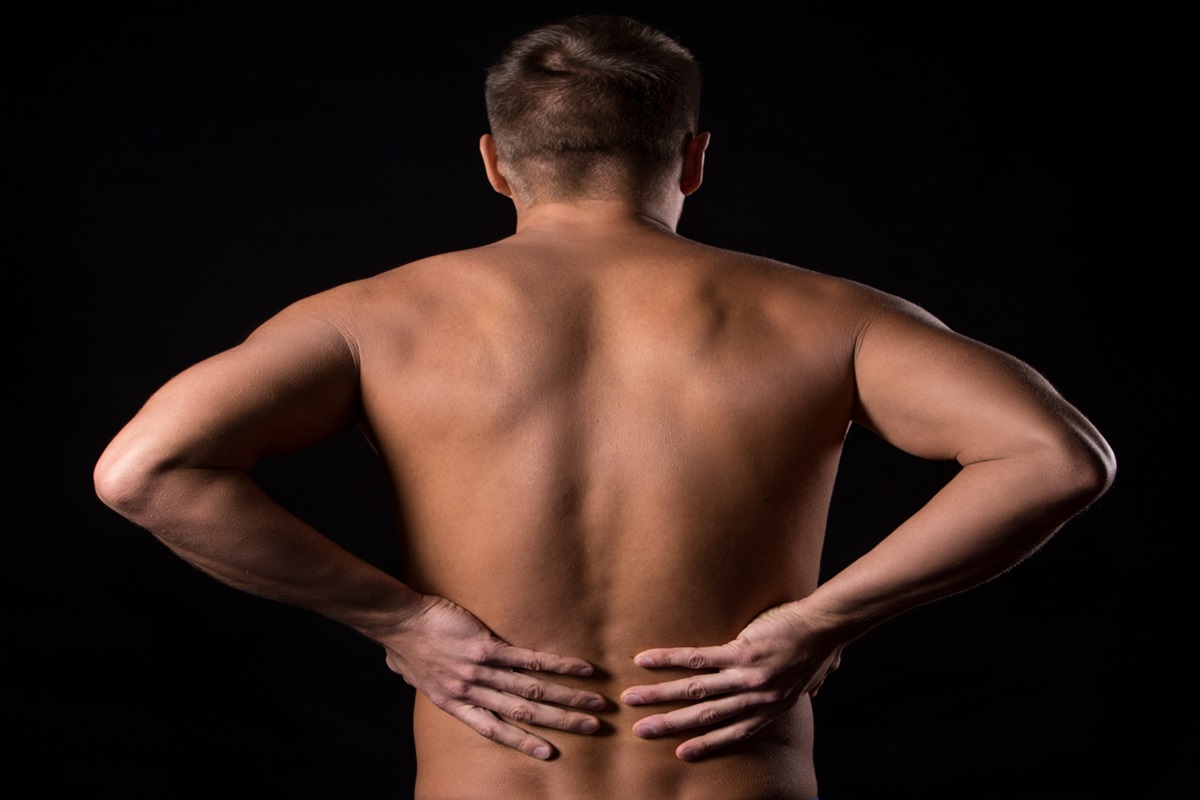A pulled muscle in the back, also known as a back strain, occurs when muscle fibers are overstretched or torn due to excessive force or improper movement. This injury can affect daily activities, causing pain and limiting mobility. Proper treatment is essential to avoid complications, such as chronic pain or further injury, and to promote a faster recovery.
Whether you’ve strained your back from lifting something heavy or an awkward movement, following a structured treatment plan can make all the difference. This guide will explore the causes, symptoms, and most effective steps to treat a pulled-back muscle, ensuring you’re back on your feet in no time.
Anatomy of the Back Muscles
Understanding these muscle groups is crucial for diagnosing and treating back strains effectively. The back is made up of three main muscle groups:
- Superficial Muscles: These muscles are positioned near the surface of the back, making them responsible for more extensive, visible movements. They include the trapezius and latissimus dorsi, which are key in moving the arms and shoulders.
- Intermediate Muscles: Positioned beneath the superficial muscles, these muscles primarily assist with breathing by supporting rib movement. Examples include the serratus posterior muscles, which help elevate and depress the ribs during respiration.
- Deep Muscles: These are the innermost muscles of the back, situated close to the spine to provide stability and support. Key muscles like the erector spinae and multifidus help maintain posture and control spinal movements.
Common Causes of a Pulled Muscle in the Back
A pulled muscle in the back can occur due to various lifestyle factors, physical activities, or sudden injuries. Understanding the common causes can help you take preventive measures and reduce the risk of back strain.
Poor Posture
Prolonged slouching or sitting in an awkward position places uneven pressure on the back muscles, leading to strain over time. This is particularly common in the neck and upper back regions, where muscles are more sensitive to misalignment.
Sedentary Lifestyle
A lack of regular physical activity can weaken back muscles, reducing their ability to support the spine. This weakness increases the likelihood of injury during sudden or strenuous movements.
Overweight
Carrying excess weight stresses the back muscles, especially in the lower back area. This added strain can lead to muscle fatigue and increase the risk of developing a pulled muscle.
Improper Lifting Techniques
Lifting heavy objects using the back instead of engaging the legs can cause excessive strain on the back muscles. This improper technique often results in overstretched or torn muscles, especially in the lumbar region.
Repetitive Movements
Continuous twisting or bending can overuse specific back muscles, leading to inflammation and strain. Jobs or sports requiring repetitive movements are common culprits for such injuries.
Falls
A sudden fall or accident can apply abrupt force to the back, overstretching or tearing the muscles. This type of injury is prevalent during high-impact activities or unexpected accidents.
Symptoms of a Pulled Muscle in the Back
Recognizing the symptoms of a pulled-back muscle is essential for early treatment and recovery. Symptoms can vary depending on the location of the strain, ranging from mild discomfort to severe pain and limited mobility.
Pulled Muscle in the Neck
Stiffness and difficulty turning the head are common symptoms, often accompanied by tension in the surrounding muscles. Pain may radiate to the shoulders or upper back, further restricting movement and causing discomfort.
Pulled Muscle in the Upper Back
This often presents as sharp or dull pain between the shoulder blades, making it difficult to perform daily activities. Discomfort is particularly noticeable during arm or shoulder movements that engage the upper back muscles.
Pulled Muscle in the Lower Back
Aches or muscle spasms in the lumbar region are typical signs of a strain in the lower back. The pain is often intensified by bending, lifting, or twisting.
Lumbar strain accounts for 70% of mechanical low back pain. About 26% of U.S. adults have low back pain at any given time and 14% experience neck pain.
Diagnosing a Pulled Muscle in the Back

Accurate diagnosis of a pulled muscle in the back is crucial to ensure proper treatment and rule out more serious conditions. This process typically involves a combination of medical history, physical examination, and, if needed, imaging tests.
Medical History
A detailed medical history lets your doctor identify potential causes, such as recent injuries, physical activities, or underlying conditions. This information helps you tailor a treatment plan specifically to your needs.
Physical Examination
During a physical examination, the doctor will assess the affected area for tenderness, swelling, and restricted movement. This evaluation helps pinpoint the specific muscle involved and determine the severity of the strain.
Imaging Tests
If symptoms persist or worsen, imaging tests like X-rays or MRIs may be ordered to rule out more severe conditions, such as fractures or herniated discs. These tests provide a clearer picture of the injury and guide further treatment.
How to Treat a Pulled Back Muscle in 8 Steps
Effectively treating a pulled back muscle involves a combination of immediate care and gradual rehabilitation to promote healing and prevent recurrence. Following these eight essential steps can reduce pain, improve mobility, and support long-term recovery after pulling a muscle in my back.
Step 1: Ice Therapy
Apply ice packs to the affected area for 15-20 minutes every 2-3 hours during the first 48 hours. Ice helps reduce inflammation and numb pain, making it an effective treatment for acute back injuries.
Step 2: Compression
A compression bandage or support wrap can minimize swelling and stabilize the strained muscles. This technique also helps limit movement, reducing the risk of further aggravating the injury.
Step 3: Activity Modification
Avoid activities that worsen pain, such as heavy lifting or prolonged sitting, to allow the muscle to heal. However, complete inactivity should be avoided; gentle movements and workout adjustments can aid in recovery and prevent stiffness.
Step 4: Stretching Exercises
Once acute pain subsides, light stretches like a child’s pose or cat cow can improve flexibility and ease tension in the back muscles. Be cautious not to overstretch, as this can worsen the injury.
Step 5: Over-the-Counter Medications
Nonsteroidal anti-inflammatory drugs (NSAIDs), such as ibuprofen or naproxen, can help alleviate pain and reduce swelling. Use these medications as directed to manage symptoms effectively during the initial healing phase.
Step 6: Strengthening Exercises
After pain decreases, include exercises like bird-dog or planks in your routine to strengthen the back muscles. Building muscle strength helps prevent future injuries and supports overall spinal health.
Step 7: Massage
Massage therapy can increase blood flow, reduce muscle tension, and speed recovery. Seeking professional massage services ensures targeted relief and optimal results for the strained area.
Step 8: Do Physical Therapy
Physical therapy is a cornerstone of effective recovery for a pulled-back muscle, providing a safe and structured approach to healing. A licensed physical therapist can develop a personalized treatment plan that addresses your unique needs, incorporating techniques such as dry needling, manual therapy, and therapeutic exercises. These methods alleviate pain, improve flexibility, restore function, and prevent future injuries by addressing underlying causes such as muscle imbalances or poor posture.
At Vitality Therapy & Performance, we specialize in customized physical therapy treatments designed to help you recover quickly and safely. Our expert team uses evidence-based practices to reduce pain and inflammation while enhancing strength and mobility. Whether through hands-on techniques, targeted exercise programs, or advanced therapies, we ensure every session is tailored to optimize your recovery journey and get you back to doing the activities you love.
When to See a Doctor for a Pulled Muscle in the Back?

Most mild muscle strains improve with rest, ice, and gentle stretching, but some may require medical attention. If your symptoms persist or worsen, seeking professional care is important.
Consider seeing a doctor if:
- The pain persists or worsens after a week of self-care.
- You experience numbness, tingling, or weakness in your legs.
- Symptoms significantly interfere with daily activities or disrupt sleep.
Conclusion
Treating a pulled muscle in your back requires a proactive approach that includes rest, targeted treatments, and professional guidance when necessary. Following these eight essential steps and addressing the root causes can promote faster healing, regain mobility, and reduce re-injury risk. Don’t let a pulled-back muscle interfere with your daily activities. Prioritize your recovery with the right combination of care and attention, and take the steps needed to restore your back’s strength and functionality.
FAQs
How do you know if you pulled a back muscle?
Signs of pulled back muscle include sudden pain, stiffness, swelling, and limited range of motion. The pain often intensifies with movement or when the affected area is touched.
Is it OK to stretch a pulled-back muscle?
Yes, gentle stretching is beneficial, but only after the acute phase of the injury has subsided. Focus on light movements to relieve tension and enhance flexibility while avoiding any stretches that cause pain.
What is the fastest way to heal a pulled lower back muscle?
Rest and ice therapy are crucial during the initial recovery phase to reduce pain and inflammation. Gradual reintroduction of movement, over-the-counter medications, and physical therapy can further accelerate healing.

